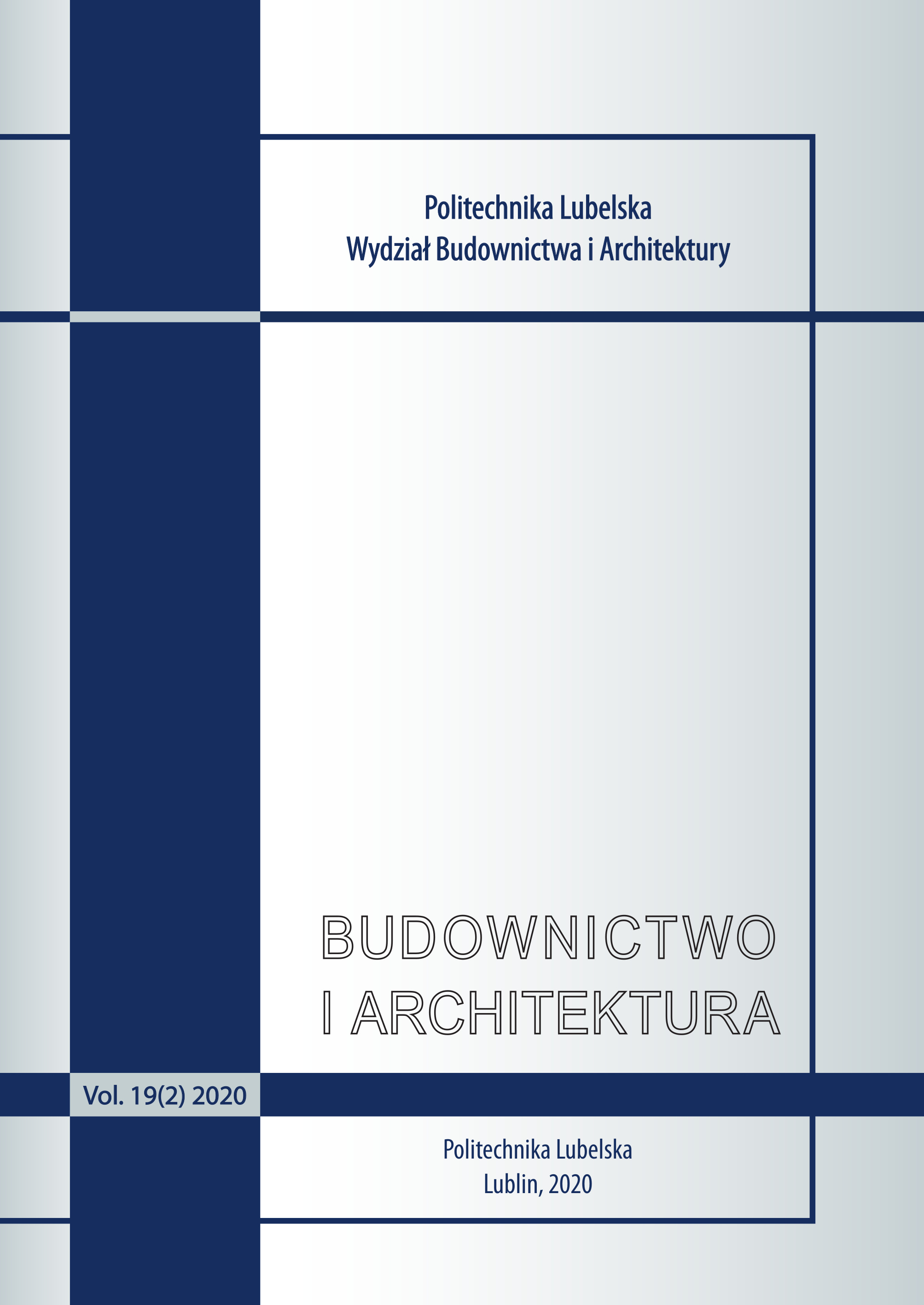The deformability of compressed concrete elements strengthened with FRCM composite materials
Tomasz Trapko
Division of Concrete Structures; Institute of Building Engineering; Wroclaw University of Technology (Poland)
https://orcid.org/0000-0002-6375-7145
Abstract
In the paper the results of experimental studies performed on compressed concrete elements strengthened with composite fabric of FRCM (Fibre Reinforced Cementitious Matrix) technology are presented. In the studies the influence of temperature, the number of composite fabric layers and the length of ending overlap on the value and distribution of circumferential limit strains was analyzed.
Keywords:
FRCM, debonding, strain, stressReferences
Lam L., Teng, J.G. Strength models for fiber-reinforced plastic-confined concrete. Journal of Structural Engineering – ASCE, 128 (5), (2012) 612-623.
DOI: https://doi.org/10.1061/(ASCE)0733-9445(2002)128:5(612)
Google Scholar
Teng J.G., Lam L. Behaviour and modelling of fiber reinforced polymer confined concrete. Journal of Structural Engineering ,130 (11), (2004) 1713-1723.
DOI: https://doi.org/10.1061/(ASCE)0733-9445(2004)130:11(1713)
Google Scholar
Chen J.F., Ai J., Stratford T.J. FRP strains in FRP wrapped columns: a parametric study. In: Proceedings of the 8th International Symposium on Fiber Reinforced Polymer Reinforcement for Concrete Structures (FRPRCS-8), Patras 2007. [na CD, referat nr 6-10].
Google Scholar
Chen J.F., Li S.Q., Bisby L.A., Ai J. FRP rupture strains in the split-disk test. Composites: Part B, 42 (4), (2011) 962–972.
DOI: https://doi.org/10.1016/j.compositesb.2010.12.015
Google Scholar
Trapko T. Fibre Reinforced Cementitious Matrix confined concrete elements. Materials & Design, 44, (2013) 382-391.
DOI: https://doi.org/10.1016/j.matdes.2012.08.024
Google Scholar
Trapko T. Stress–strain model for FRCM confined concrete elements. Composites: Part B, 45 (1), (2013) 1351-1359.
DOI: https://doi.org/10.1016/j.compositesb.2012.07.001
Google Scholar
Mirmiran A., Shahawy M., Samaan M., El Echary H. Effect of column parameters on FRP-confined concrete. ASCE Journal of Composites for Construction, 2 (4), (1998) 175–85.
DOI: https://doi.org/10.1061/(ASCE)1090-0268(1998)2:4(175)
Google Scholar
Rochette P., Labossiere P. Axial testing of rectangular column models confined with composites. J Compo Constr, 4 (3), (2000) 129–36.
DOI: https://doi.org/10.1061/(ASCE)1090-0268(2000)4:3(129)
Google Scholar
Silva M.A.G. Behavior of square and circular columns strengthened with aramidic or carbon fibers. Construction and Building Materials, 25 (3), (2011) 3222–3228.
DOI: https://doi.org/10.1016/j.conbuildmat.2011.03.007
Google Scholar
Wang L-M., Wu Y-F. Effect of corner radius on the performance of CFRP-confined square concrete columns: Test. Engineering Structures, 30 (2), (2008) 493-505.
DOI: https://doi.org/10.1016/j.engstruct.2007.04.016
Google Scholar
Wu Y-F., Wei Y-Y. Effect of cross-sectional aspect ratio on the strength of CFRP-confined rectangular concrete columns. Engineering Structures, 32 (1), (2010) 32-45.
DOI: https://doi.org/10.1016/j.engstruct.2009.08.012
Google Scholar
Wu Y-F., Jiang J-F. Effective strain of FRP for confined circular concrete columns. Composite Structures, 95 (1), 2013 479-491.
DOI: https://doi.org/10.1016/j.compstruct.2012.08.021
Google Scholar
PN-EN 197-1:2012. Cement – Część 1: Skład, wymagania i kryteria zgodności dotyczące cementów powszechnego użytku.
Google Scholar
Aprobata Techniczna Instytutu Badawczego Dróg i Mostów nr AT/2011-02-2701/1.
Google Scholar
ASTM D3039/D3039M:2008. Standard test method for tensile properties of polymer matrix composite materials.
Google Scholar
ISO 527-5:1997. Plastic – Determination of tensile properties, Part 5: Test conditions for unidirectional fibre – reinforced plastic components.
Google Scholar
Karbhari V.M., Howie I. Effect of composite wrap architecture on strengthening of concrete due to confinement: II-Strain and damage effects. Journal of reinforced plastics and composites, 16 (11), (1997) 1039-1063.
DOI: https://doi.org/10.1177/073168449701601105
Google Scholar
Authors
Tomasz TrapkoDivision of Concrete Structures; Institute of Building Engineering; Wroclaw University of Technology Poland
https://orcid.org/0000-0002-6375-7145
Statistics
Abstract views: 296PDF downloads: 232
License

This work is licensed under a Creative Commons Attribution-NonCommercial-NoDerivatives 4.0 International License.
Budownictwo i Architektura supports the open science program. The journal enables Open Access to their publications. Everyone can view, download and forward articles, provided that the terms of the license are respected.
Publishing of articles is possible after submitting a signed statement on the transfer of a license to the Journal.








